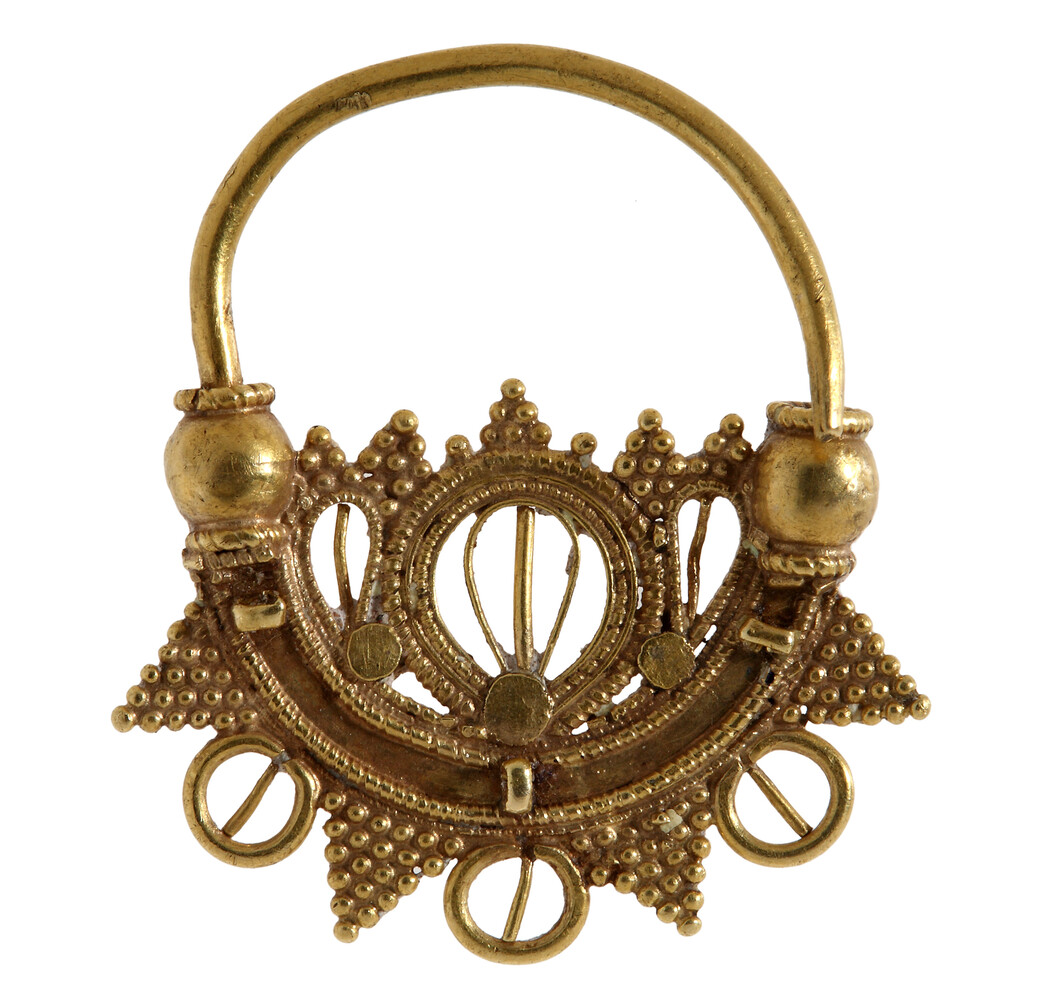Does Material Matter? Similarities and Differences in Metal Jewellery of the Early and Middle Byzantine Periods
The goal of the planned study is to work out similarities and differences between significant object types in connection with their usage of different metals (precious metals and copper alloys) during the 6th– 12th centuries. To this end, an interdisciplinary approach will be followed, with the application of typo-chronology, analysis of decoration, manufacturing technique and material analysis.
Research Areas
The goal of the study should be attained by means of the following research areas:
- Comparative analyses of Byzantine precious metal and copper alloy jewellery
- Regionality versus interregionality
- Techniques of manufacture
- Scientific material analysis with regard to the usage of different metals
- Cultural-historical interpretation.
The approaches are articulated in the data collection, data evaluation and cultural-historical analysis.
Methods
For this type of investigation, an interdisciplinary approach is followed that combines traditional archaeological methods (A. M. Pülz) with fine forging technology (B. Bühler, D. Schwarcz) and chemical analysis (D. Oberndorfer, D. Schwarcz) and adopts the following focal points: typo-chronology, analysis of decoration, technology of production, and material analysis.
Goal
The results could be of decisive significance for the social, economic and technological history of Byzantine society in the Early and Middle Byzantine periods. The study of changes in, and reception of the material, as well as of forms and motifs, is not only relevant for chronological classifications, but also touches on questions of distribution, contacts and trade. At the same time, it enables an overview of the metals employed and of techniques of production and decoration of the relevant types of jewellery within the Byzantine Empire and during the specified chronological framework.
The analyses combined in this manner of the metals employed, with the diverse techniques of production and decoration of the various types of jewellery, and their comparison in a diachronic context, can be seen as an innovative research approach. Furthermore, a concept that diverges considerably from the established model of the interregionality of Byzantine handicrafts will be proposed, that emphasises regionality with regard to material, style and technology.
Introduction
The proposed study is concerned with specific types of earrings, buckles and belt decorations in the Early and Middle Byzantine period (6th – 12th centuries), including the transitional period, the so-called dark centuries between the 7th and the 9th centuries. The geographical framework is limited to the Byzantine realm and concentrates primarily on well-documented find spots with a broad spectrum of comparable material.
The project's goal is to work out similarities and differences between significant object types, in connection with their usage of different metals (precious metals and copper alloys) during this time frame. In the course of the project, so-called interregional characteristics of a central Byzantine style should also be investigated for the individual types, and should be confronted with a probable regional concept, since the question arises whether regional influences − not only in the border regions, but also in the core regions of the Byzantine Empire − did not play a far greater role than has been assumed in the scholarship so far. The division of the artefact groups and types should shed light on the relationship between the finds and should aid in determining regional characteristics within the Byzantine Empire. In this regard the diachronic components in particular play a significant role.
Principal Investigator
Team
Cooperation
Georg Plattner (Kunsthistorisches Museum Wien, Antikensammlung)
Duration
06/2020–05/2024
Funding
FWF-Projektnummer P32590-G

